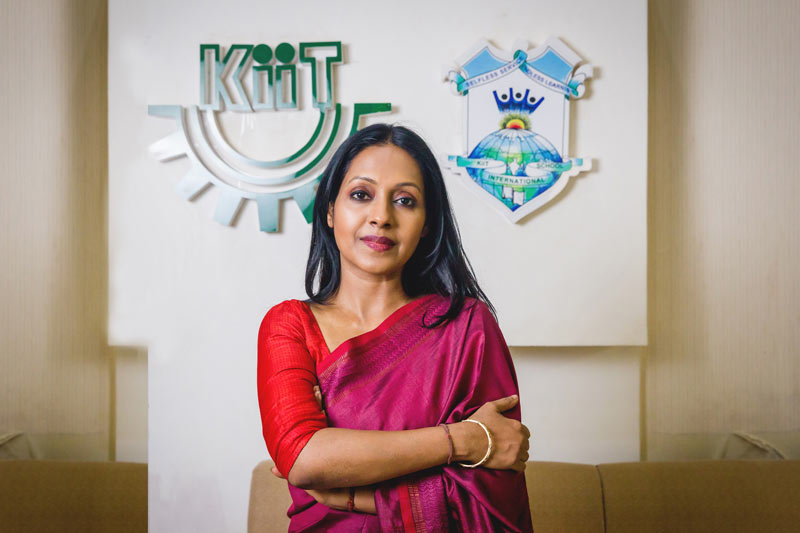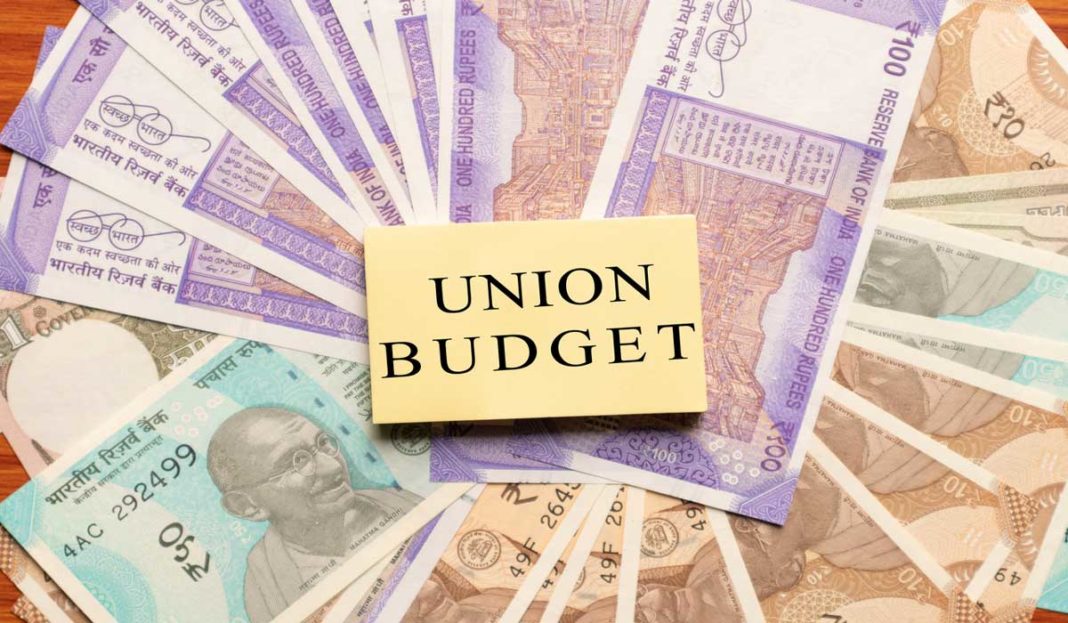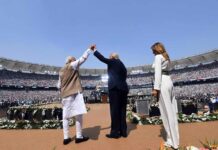It’s natural for people and industry alike to express their expectations and apprehensions before the annual budget of any nation unfolds. An event that one can say has the potential to affect a nation’s course of direction for years to come. Indian Budget 2022 preparations are in full swing and is expected to be launched in the coming weeks. Here are a few top industrialist honchos putting forth their expectations before it’s announcement.
Mr. Farrokh Cooper, Chairman & Managing Director, Cooper Corporation

“The forthcoming Union Budget for 2022 should emphasise measures to help the Indian economy recover from the pandemic and to boost consumption-led demand. The auto industry expects relief from the Union Budget in multiple areas. To achieve sustainable growth, business communities should be encouraged to invest more in industry and businesses. I believe that the government should fix industry income rates for at least five years so that industrialists can make long-term financial planning and take appropriate decisions about investment in their industries.
Furthermore, the government is now encouraging businesses to establish large industries, and they should be treated equally with medium and small industries in terms of receiving timely payments from the government and private sectors so that they can pay small and medium enterprises. Furthermore, the government should priorities managing inflation and lowering the cost of raw materials and fuel. To boost exports, existing incentives must be increased. There is also a need to accelerate the GST refund procedure to provide liquidity to the industries. The industry is also eagerly awaiting news on the scrappage policy. Given the current market conditions, we anticipate significant initiatives to revive growth and boost investor confidence in the upcoming Union Budget”.
Mr. Anurag Garg, Managing Director & Country Head, Vitesco Technologies, India

“The Union Budget 2022 was the most anticipated budget for the Indian automotive and manufacturing sector. There was a strong push towards manufacturing and localization in this budget. Apart from the usual focus on fiscal deficit, this time the government has shown a great focus on health and infrastructure development this time. To take the overall automotive industry and retail trade back on the path of growth, the Ministry should regulate and reduce GST rates on two-wheelers to 18%. It is important to note that the two-wheeler is a necessity to travel distances by lower class and rural segments for their daily working needs. The market is very volatile, and the automobile prices are increasing every 3-4 months due to incessant price hikes in metals and various other issues, a reduction in GST rate will counter the price hike and aid in shooting up the demands in the market.
We are further awaiting more light on production-linked incentive (PLI) schemes extended for electric vehicles and advanced technology components, the vehicle scrappage policy, and announcements of PLI scheme for semiconductors are major positive steps. These have the potential to boost demand and resolve supply chain disruptions for the industry. The PLI Scheme will get a better push to boost manufacturing and attract investments in the automotive sector, benefitting us in the long run. The increase in custom duties on some sectors is designed to push self-reliance and localization. As we look towards a future with electrified automotive, localization will definitely help in cost optimization in the future. Though it might create initial challenges through price hikes and demand generation, it will be better for our economy in long run.
Additionally, the focus on renewable energy is welcome. The Hydrogen Energy Mission and focus on solar energy will help meet our energy requirements in the future adequately. Health outlay in the budget has increased by almost 100% considering the pandemic situation, this will help us to uplift the health infrastructure in both urban and rural segments of our country.”
Ramanujam Komanduri, Country Manager, India, Pure Storage

“With restrictions in place amidst the third wave of Covid, large enterprises as well as small businesses are seeing a dip in their business activities. Both corporates and taxpayers expect relief in the form of rebates in direct and indirect taxes in the upcoming budget. We also expect the introduction of simplified compliances to facilitate the ease of doing business. The Finance Ministry could also introduce special stimulus packages to the MSME sector which is vital for economic revival. There may also be a positive surprise in the form of a relaxation of GST regulation and relief for sectors that have particularly suffered during the pandemic. The Government, to provide further impetus to business growth, could also introduce fiscal policy initiatives to build a strong digital infrastructure for MSMEs and enterprises.
While India has one of the most dynamic technology ecosystems globally, we hope that the government will reaffirm its commitment to ‘Digital India’ through appropriate allocations and policies in this Union budget.”
Mr. G. Srinivasan, CEO, Athulya

“The changing dynamics of the healthcare industry post the outbreak of Covid-19 has elucidated the need for enhancing the skills of existing healthcare workers to facilitate better service.
Hence, initiatives to motivate youngsters to take up a career in the healthcare industry and to include continuous development programs in their curriculum to enhance their skills will address the current demand for healthcare professionals.
To help our senior citizens meet the rising cost of medical treatments we would request to increase the health insurance age limit for senior citizens and to include provisions to increase the coverage, irrespective of existing medical illnesses.
To increase the support and guidance given to start-ups, in the form of incentives towards building and developing healthcare technologies that would aid in early detection, monitoring, screening and diagnosis of health ailments. This will reduce our dependence on international companies for the same.
We would also expect the government to considerately reduce the taxes imposed on medical equipment that are very essential, which will result in bringing down the overall medical expenses for an individual with ailments and comorbidities. Eventually, helping our senior citizen community to fight the potential escalations in their medical bills.
And finally, to increase the tax benefits against their medical expenses and to revise the existing deduction for senior citizens as the cost of living has increased.”
Dr. Mona Lisa Bal, Chairperson, KiiT International School

“The year 2022 has started with a fresh wave of the pandemic that has further shook the backbone of our education system. The learning loss created by the pandemic needs immediate redressal in the Union Budget 2022. The existing digital divide in the country is no longer a new information. According to UNESCO’s state Education Report 2021, the availability of computing equipment in schools in India has been found to be only 22% and only 19% out of them have an internet facility. The development of digital infrastructure did not receive due consideration in last year’s budget and hence, it is imperative to allocate sufficient funds for the development of a robust and improved digital infrastructure.
With physical classes being shut once again, students will be dependent on online classes to continue learning. We must ensure that no student in the country is left behind owing to financial and technological disadvantage. The end of the pandemic is nowhere in sight; therefore, it is essential that we take measures to guarantee that education is not put on hold. The unpredictable nature of our present has made it clear that we need to safeguard our future.
It is important that we adapt our education system, pedagogies, and assessments accordingly. Upskilling of teachers is therefore more important than ever now. The economic implication of the pandemic has been adverse, and many have lost their livelihood or have lowered income. Reduction of interest rates on education loans is also required so that students aspiring for higher education are not financially burdened. Implementation of NEP 2020 has been slow, and the upcoming budget also needs to focus on this. Budgetary allocations need to be made for faster implementation of NEP 2020 which has the potential to change our education system for the better. 6 – 10% of the GDP should be allocated towards education. This would lead to a healthy start in the further progress to build a stronger foundation. Opening FDI into education would be helpful in further expansion of technological advancements.”
Dr Silpi Sahoo, Chairperson, SAI International Education Group

“The progress of a nation depends on the educated youth. We hope our Government shift their focus on the education sector with a vision that not a single child is deprived of quality education. We expect to see an increase in the allocation of annual budget for education from 6% as done in 2021 which amount a total allocation of Rs. 93,223 crores, against Rs. 99,311 crores in the year before that. We are hoping for an increase of allocation of the annual education budget to 10%.
Currently, the GST rate which is applied on education is categorized under Education Services and hence 18% GST is levied, we expect the Government to revise the GST rate and reduce it to 5%. The pandemic has severely impacted the learning process and students are looking at the other supplementary sources, hence, reducing the GST will ease the pressure of the parents especially those from lower or middle class and learning will be made affordable for all the sections of the society.
Over 200 million children lost a complete year of formal education due to the lack of proper digital infrastructure and unequipped teachers as Schools were shut across the country. Online education needed a dynamic digital infrastructure but due to lack of funds the schools could not impart education. Education should reach each corner and the remotest of areas of India. The pandemic showed a mirror that we need to have a robust and improved digital infrastructure to reduce the digital divide of rural and urban.”
Mr Amit Saraogi, Managing Director, Anmol Feeds

“The year 2021 has been tough on all industries including the livestock and animal husbandry sector. Adding to this is the almost doubling of raw material prices like soya meal which is an important component in poultry and fish feed. This automatically pushes the price of finished products up and the farmers have to bear the brunt of it. Hence it is important to regulate the price of these raw materials and the upcoming budget must look into it. Moreover, import of genetically modified soya and maize must be allowed to bridge the demand supply gap that exists. The livestock sector currently contributes 25.6% to the Agricultural GDP and 4.11% to the National GDP and can grow further and contribute effectively towards nation building. For successful crop, it is important that the animals receive the right nutrition.
The Government should look at bringing in policies so that a certain standard is maintained in feed production with approval from Ministry/ MSME / any other govt official for small scale feed manufactures – so that the quality and feed type can be monitored and maintained. A minimum contract growing charge should also be fixed for the poultry sector so that farmers are not affected by the fluctuating market. Animal husbandry farmers do not enjoy the same advantage as crop farmers. It is high time that they reap the benefits of credit and insurance. NBFCs and other financial entities should start providing credit loans to animal husbandry farmers so that the sector can reach its full potential.
Though the Government has rightly focused on the aquaculture and fisheries sector in previous budget, further attention and implementation of previous measures must be ensured. The budget for the Pradhan Mantri Matsya Sampada Yojna needs to be increased by 400% to reap the benefits of this sector properly. The aquaculture sector has tremendous ability to generate livelihood, especially for reverse migrants who have lost their jobs during the pandemic. Performance Linked Incentive scheme should be made applicable on manufacturing of floating fish feed and petfood as well. Government schemes like EPCG is a key enabler of international business to all business institutions which have a significant focus on the export market. However, there is a disparity in the system regarding export to Nepal & Bhutan which does not allow businesses to take advantage of this scheme. The Government must take note of this inconsistency and introduce remedial measures accordingly. Lastly, the Union Budget must encourage indigenous investment in infrastructural development like machines to produce feed and other technologies to take the sector ahead so that companies do not have to be dependent on importing such machines from foreign countries and make Bharat Atmanirbhar.”
Also Read:
- Click, Pay and Get Cheated: How Amazon India’s Fake Seller Network Is Looting Innocent Consumers
- USA’s New Chapter – Great Game Unfolding In South Asia
- Why AI Isn’t a Bubble — It’s India’s Next Competitive Advantage
- Race For India’s Next Chief Of Defence Staff (CDS) Heats Up
- Opportunities for Establishing MRO Facilities in Commercial/ Defence Aviation, Drones, AAM, and GCC’s in India
- Suspicions Galore as Indigo’s Co-founder Flies Out Of India


























Very valid and pertinent points that Honorable Finance Minister Ms Nirmala Sitharaman should and must incorporate particularly the budgets for Education & Health need special attention & allocations.